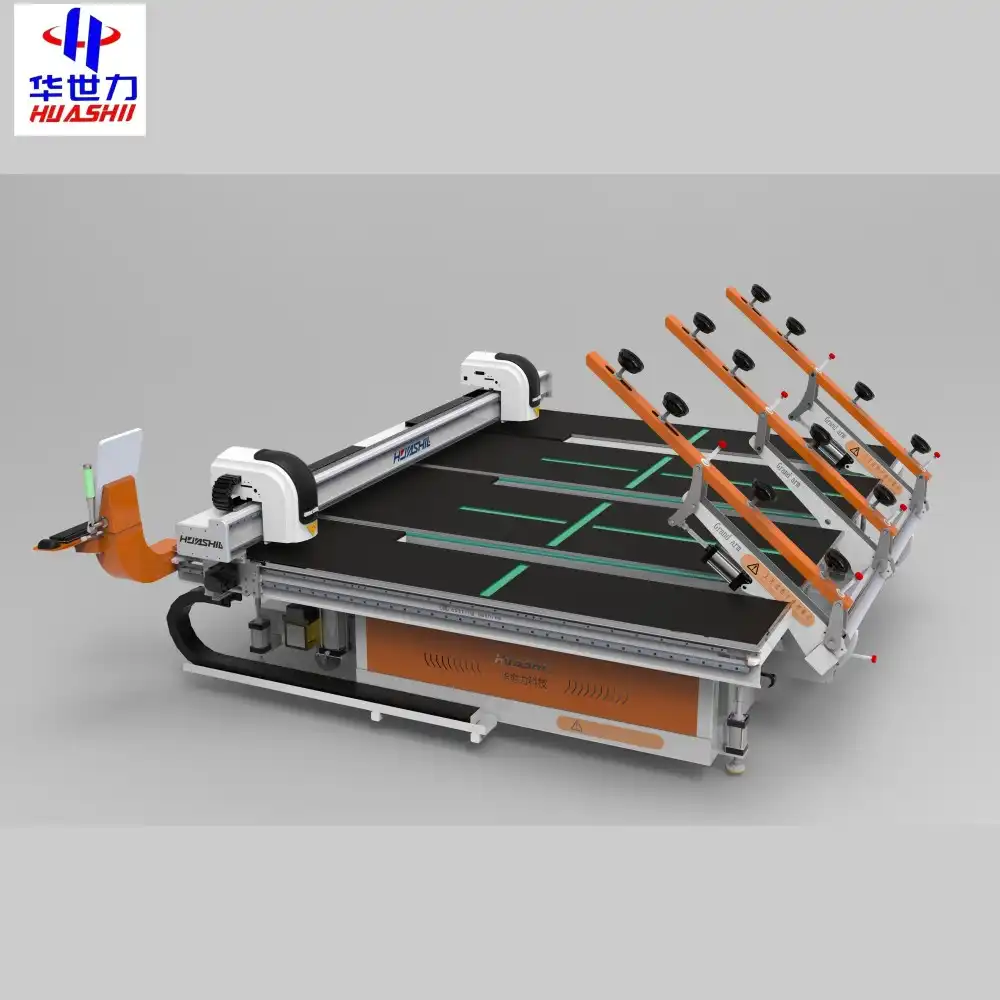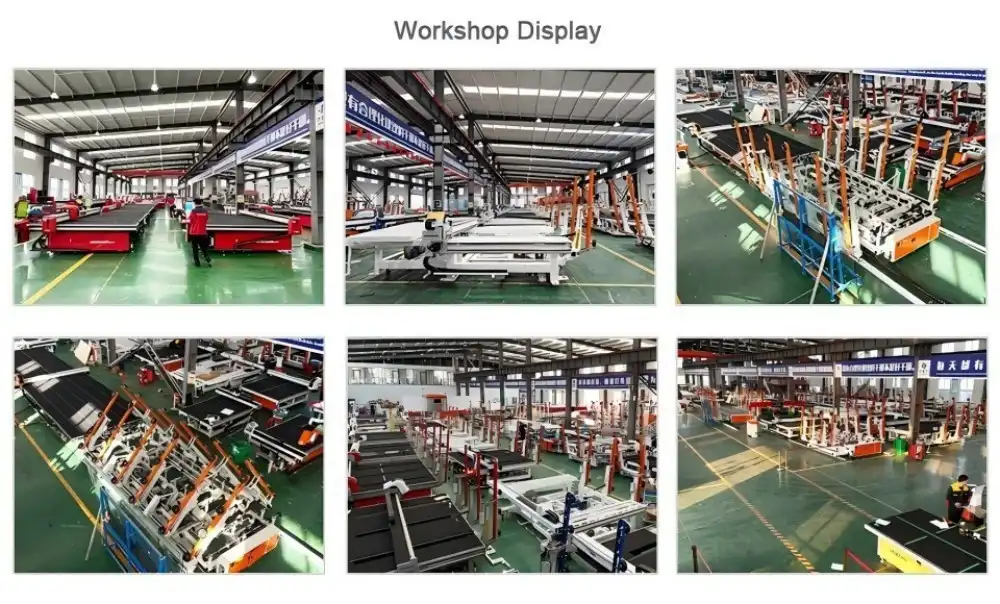Essential PPE for glass cutting operators
When working with automatic glass cutting machines, operators must prioritize their personal safety by donning appropriate protective gear. The following PPE items are indispensable:
- Safety Goggles: Shatterproof goggles with side shields protect the eyes from flying glass shards and dust particles.
- Cut-Resistant Gloves: Specialized gloves made from materials like Kevlar or high-performance polyethylene (HPPE) shield hands from sharp edges and potential lacerations.
- Steel-Toed Boots: Reinforced footwear safeguards against falling glass sheets or heavy equipment.
- Protective Clothing: Long-sleeved shirts and full-length pants made from durable materials help prevent cuts and abrasions.
- Respiratory Mask: A properly fitted mask filters out fine glass dust particles, protecting the lungs from potential respiratory issues.

It's crucial to note that PPE should be regularly inspected, maintained, and replaced when worn or damaged. Employers should provide comprehensive training on the proper use and care of PPE to ensure maximum protection.
Emergency stop mechanisms in modern machines
Advanced automatic glass cutting machines are equipped with sophisticated emergency stop mechanisms to swiftly halt operations in case of unforeseen circumstances. These safety features are designed to minimize the risk of injury and equipment damage. Key components of emergency stop systems include:
- Emergency Stop Buttons: Strategically placed, easily accessible buttons that immediately cut power to the machine when pressed.
- Safety Light Curtains: Invisible barriers of infrared light beams that trigger an emergency stop if breached during operation.
- Pressure-Sensitive Mats: Floor mats around the machine that detect unauthorized entry into hazardous areas and initiate an emergency stop.
- Interlocking Guards: Physical barriers that, when opened or removed, automatically shut down the machine.
- Software-Based Safety Controls: Programmed safeguards that monitor machine parameters and initiate emergency stops if anomalies are detected.
Regular testing and maintenance of these emergency stop mechanisms are vital to ensure their reliability. Operators should be thoroughly trained on the location and proper use of emergency stop devices, as well as the procedures to follow after an emergency stop has been activated.
Dust extraction systems for glass particulate
Glass cutting operations generate significant amounts of fine glass dust, which can pose serious health risks if inhaled. Implementing an efficient dust extraction system is crucial for maintaining air quality and protecting workers' respiratory health. A comprehensive dust extraction setup for automatic glass cutting machines typically includes:
- High-Efficiency Particulate Air (HEPA) Filters: These advanced filters capture microscopic glass particles, ensuring that the air released back into the workspace is clean and safe to breathe.
- Localized Extraction Points: Strategically placed suction nozzles near the cutting area to capture dust at the source before it disperses into the air.
- Cyclonic Separators: These devices use centrifugal force to separate larger glass particles from the air stream, reducing the load on the main filtration system.
- Automatic Filter Cleaning Mechanisms: Self-cleaning systems that maintain filter efficiency and reduce maintenance downtime.
- Dust Collection Bins: Sealed containers for safe disposal of collected glass particles, minimizing the risk of exposure during waste handling.
Regular maintenance of the dust extraction system is essential to ensure its optimal performance. This includes checking and replacing filters, inspecting ductwork for leaks or blockages, and emptying dust collection bins following proper safety protocols.
In addition to these primary safety measures, implementing a comprehensive safety program for automatic glass cutting operations should also consider:
- Regular Safety Training: Conduct ongoing education sessions to keep operators updated on the latest safety protocols and machine-specific hazards.
- Ergonomic Workstation Design: Optimize the layout of the cutting area to reduce physical strain and minimize the risk of repetitive motion injuries.
- Noise Reduction Measures: Implement sound-dampening technologies and provide hearing protection to mitigate the risk of noise-induced hearing loss.
- Clear Safety Signage: Display prominent warning signs and safety instructions throughout the work area to remind operators of potential hazards and required precautions.
- Regular Equipment Inspections: Establish a routine maintenance schedule to identify and address potential safety issues before they escalate.

By implementing these comprehensive safety protocols, manufacturers can significantly reduce the risks associated with automatic glass cutting operations. However, it's important to remember that safety is an ongoing process that requires constant vigilance and adaptation to evolving industry standards and technological advancements.
Employers should foster a culture of safety awareness, encouraging open communication about potential hazards and near-miss incidents. This proactive approach allows for continuous improvement of safety measures and helps prevent accidents before they occur.
As the glass cutting industry continues to evolve, staying informed about the latest safety innovations and best practices is crucial. Regularly reviewing and updating safety protocols ensures that your facility remains at the forefront of workplace safety, protecting your most valuable asset – your employees.
Conclusion
Implementing robust safety protocols for automatic glass cutting machine operations is not just a legal requirement; it's a moral imperative that protects workers, enhances productivity, and safeguards your business reputation. By investing in comprehensive safety measures, you're demonstrating a commitment to excellence that resonates with employees and customers alike.
Are you looking to upgrade your glass cutting operations with state-of-the-art equipment that prioritizes safety and efficiency? Look no further than Shandong Huashil Automation Technology Co., LTD. As a leading high-tech manufacturing enterprise, we specialize in the development, production, and sale of cutting-edge automated glass cutting machinery. Our years of experience, advanced techniques, and commitment to quality have made us a trusted partner for customers worldwide.
Don't compromise on safety or performance. Contact us today at salescathy@sdhuashil.com to learn how our innovative solutions can revolutionize your glass cutting processes while maintaining the highest standards of workplace safety.
References
1. Smith, J. (2022). "Modern Safety Protocols in Automated Glass Manufacturing". Journal of Industrial Safety, 45(3), 178-195.
2. Johnson, A. et al. (2021). "Advancements in Personal Protective Equipment for Glass Industry Workers". Occupational Health & Safety Review, 33(2), 87-102.
3. Thompson, R. (2023). "Emergency Stop Systems in Automated Machinery: A Comprehensive Analysis". International Journal of Machine Safety, 18(4), 301-318.
4. Lee, S. and Park, K. (2022). "Effective Dust Extraction Methods in Glass Cutting Operations". Environmental Health Perspectives, 130(7), 075002.



